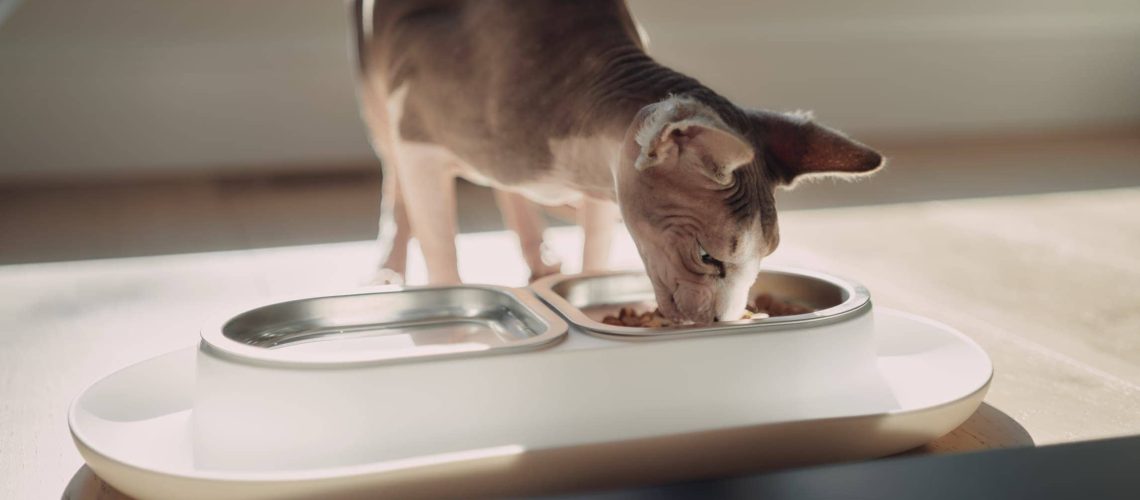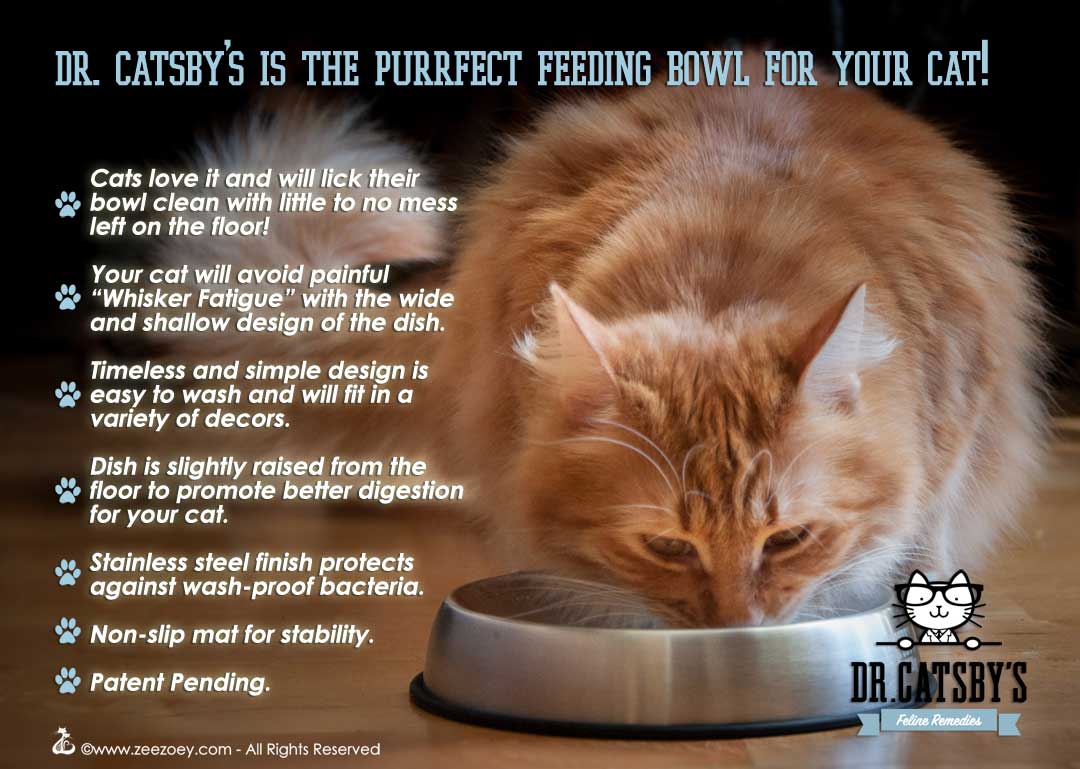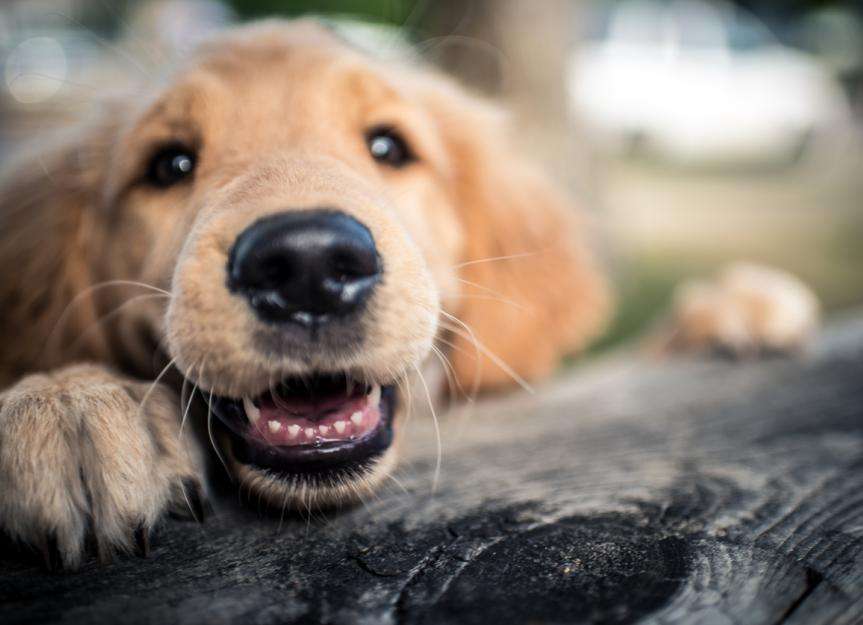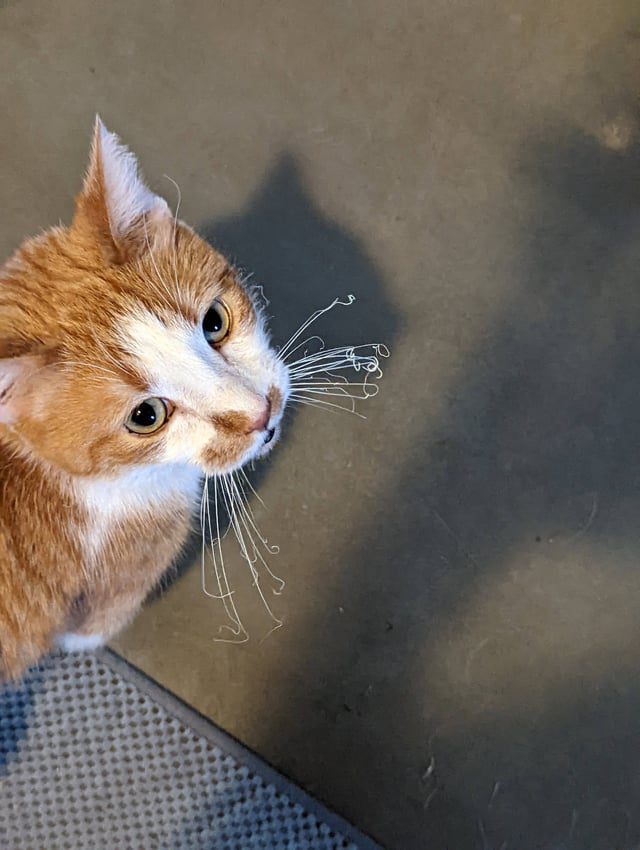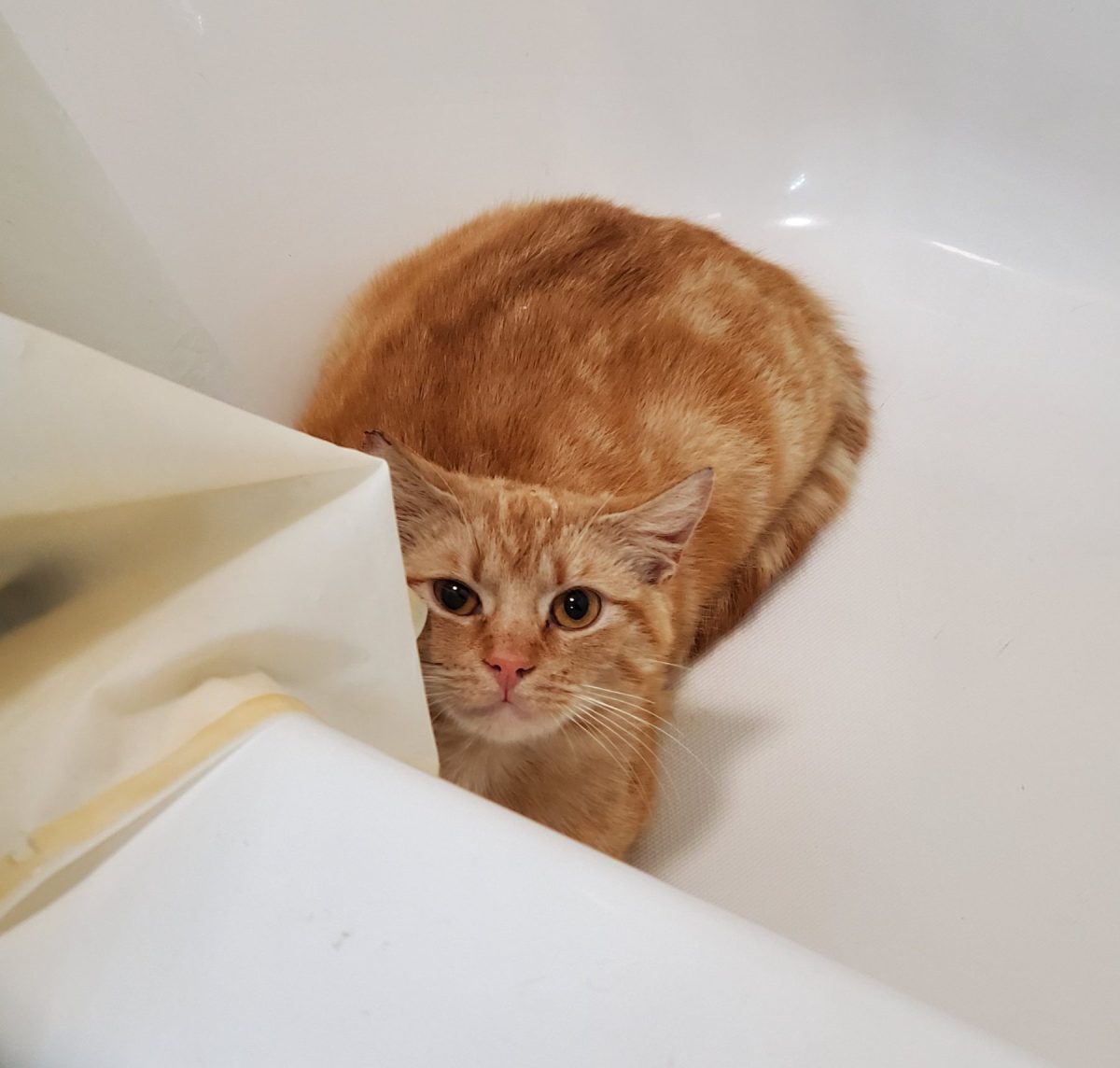Are you a cat owner who wants to ensure your furry friend is always well-nourished and hydrated? If so, then understanding the basics of picking the perfect food and water bowls for cats is essential. By delving into this subject, you will discover the value of providing your cat with suitable bowls that cater to their needs. Did you know that using the right bowls can help prevent whisker fatigue in cats? Whisker fatigue occurs when a cat's sensitive whiskers constantly touch the sides of their bowl, causing discomfort and stress. In this article, we will explore how choosing the right bowls can enhance your cat's mealtime experience while promoting their overall health and well-being. So, let's dive in and uncover the secrets to selecting the ideal food and water bowls for your feline companion!
Key Takeaways:
- Choose food and water bowls that are made of non-porous materials, such as stainless steel or ceramic, to prevent the growth of bacteria.
- Avoid using plastic bowls for your cat's food and water, as they can harbor bacteria and may cause allergies or acne on your cat's chin.
- Consider the size of your cat when selecting food and water bowls. The bowls should be wide enough for your cat to comfortably eat or drink from without their whiskers touching the sides.
- Opt for shallow bowls rather than deep ones to accommodate cats with flat faces or short noses, as they may struggle to reach their food or water in deeper bowls.
- Clean your cat's food and water bowls regularly to maintain good hygiene. Wash them with hot, soapy water daily and replace them if they become cracked or damaged.
Important Factors to Consider when Choosing Food and Water Bowls for Cats
When choosing food and water bowls for your cat, it's important to consider a few key factors. First, you'll want to think about the size of the bowls. Make sure they are large enough to hold an adequate amount of food and water for your cat, but not so big that they become overwhelming. It's also a good idea to choose bowls with a wide base to prevent tipping or spilling.
Another factor to consider is the material of the bowls. Stainless steel is a popular choice because it is durable, easy to clean, and doesn't harbor bacteria like plastic or ceramic bowls might. Additionally, look for bowls that are dishwasher safe for convenience.
Size
- Choose bowls that are large enough to hold an adequate amount of food and water for your cat
- Avoid bowls that are too big as they can be overwhelming for your cat
- Look for bowls with a wide base to prevent tipping or spilling
Material
- Consider stainless steel bowls as they are durable and easy to clean
- Avoid plastic or ceramic bowls which can harbor bacteria
- Look for dishwasher safe options for convenience
Ensuring Suitable Food and Water Bowls for Your Cat's Needs
To ensure that the food and water bowls you choose are suitable for your cat's needs, there are a few things you should keep in mind. First, consider the height of the bowl. Some cats prefer elevated or raised bowls, while others may be more comfortable with traditional floor-level bowls.
You should also take into account any special dietary needs or health conditions your cat may have. For example, if your cat has a flat face or short nose, they may benefit from a shallow, wide bowl that allows them to eat without putting strain on their face and neck. If your cat tends to eat too quickly, consider a puzzle feeder or slow feeder bowl to encourage slower eating.
Bowl Height
- Some cats prefer elevated or raised bowls
- Others may be more comfortable with traditional floor-level bowls
Dietary Needs and Health Conditions
- Consider any special dietary needs or health conditions your cat may have
- Cats with flat faces or short noses may benefit from shallow, wide bowls
- If your cat eats too quickly, consider a puzzle feeder or slow feeder bowl
The Importance of Selecting the Right Size Bowls for Your Cat
Choosing the right size bowls for your cat is crucial for their health and well-being. Cats have different dietary needs, and providing them with appropriately sized bowls ensures they can eat comfortably and easily. If the bowl is too small, it can make it difficult for your cat to access their food or water, leading to frustration and potential health issues. On the other hand, if the bowl is too large, it may encourage overeating, which can lead to obesity and other related health problems.
When selecting a bowl size for your cat, consider their breed, age, and eating habits. Kittens may require smaller bowls initially but will eventually need larger ones as they grow. Additionally, some cats prefer wider bowls that don't touch their whiskers when eating. It's important to observe your cat's behavior during mealtime to determine the most suitable bowl size for them.
The Best Materials for Cat Bowls and Why They Matter
The material of a cat bowl plays a significant role in maintaining your feline friend's health and hygiene. Stainless steel bowls are often recommended due to their durability, ease of cleaning, and resistance to bacteria growth. These bowls are also less likely to cause allergic reactions in cats compared to plastic or ceramic options.
Plastic bowls may be affordable and lightweight but can harbor bacteria if not cleaned properly or if they develop scratches over time. Ceramic bowls are another popular choice as they are sturdy and come in various designs; however, it's essential to ensure that the glaze used on these bowls is non-toxic and lead-free.
In summary, stainless steel is generally considered the best material for cat bowls due to its hygienic properties. However, ceramic bowls with safe glazes can also be suitable alternatives depending on your cat's preferences and your personal aesthetic preferences.
Beneficial Features and Designs in Cat Bowls
When it comes to cat bowls, there are several beneficial features and designs that can enhance your cat's dining experience. One important feature is a non-slip base or rubberized bottom, which prevents the bowl from sliding around while your cat eats. This ensures stability and reduces the mess caused by spilled food or water.
Elevated or raised bowls are another popular design choice as they promote better posture during feeding, especially for cats with arthritis or neck pain. These bowls elevate the food to a more comfortable height, reducing strain on their neck and spine. Additionally, some elevated bowls come with adjustable heights, allowing you to customize it according to your cat's needs.
Another beneficial design is a shallow bowl with sloped sides. This type of bowl prevents whisker fatigue, a condition where a cat's sensitive whiskers touch the sides of the bowl while eating. Whisker fatigue can cause discomfort and stress for cats, so opting for wider and shallower bowls can alleviate this issue.
Cleaning Your Cat's Food and Water Bowls: How Often and How to Do It
Maintaining clean food and water bowls is essential for your cat's health. Ideally, you should wash their bowls daily using hot water and mild dish soap. Scrubbing the bowls thoroughly removes any leftover food particles or bacteria that may have accumulated throughout the day.
In addition to daily cleaning, it's recommended to sanitize the bowls at least once a week. You can do this by soaking them in a mixture of one part white vinegar to three parts water for about 10-15 minutes. Vinegar helps eliminate any remaining bacteria or odors effectively.
Remember to rinse the bowls thoroughly after cleaning to remove any soap or vinegar residue. Dry them completely before refilling with fresh food or water to prevent bacterial growth. By following these cleaning practices, you can ensure that your cat's bowls remain hygienic and safe for their consumption.
Elevated or Raised Bowls: Can They Benefit Cats?
Elevated or raised bowls can indeed provide several benefits for cats. These bowls are designed to elevate the food and water off the ground, which can be advantageous for cats with certain health conditions or physical limitations.
One of the main benefits of elevated bowls is improved digestion. When a cat eats from a raised bowl, it helps promote a more natural posture by aligning their digestive system. This can reduce the chances of indigestion, vomiting, and regurgitation.
Furthermore, elevated bowls can be beneficial for cats with arthritis or joint pain. Bending down to eat from floor-level bowls may cause discomfort and strain on their neck and spine. By raising the bowls to a more comfortable height, it reduces stress on their joints and makes mealtime more enjoyable.
However, it's important to note that not all cats may benefit from elevated bowls. Some cats may prefer eating from traditional floor-level bowls, so it's essential to observe your cat's behavior and consult with your veterinarian before making any changes.
Potential Dangers and Health Risks of Certain Types of Cat Bowls
While there are many safe options available, certain types of cat bowls can pose potential dangers and health risks if not chosen carefully. One such risk is associated with plastic bowls that contain harmful chemicals like BPA (bisphenol A). BPA has been linked to various health issues in both humans and animals, including hormonal imbalances and increased risk of certain cancers.
Another risk is the use of bowls with deep narrow shapes. These bowls can cause a condition called "whisker stress" or "whisker fatigue." When a cat's sensitive whiskers repeatedly touch the sides of a deep bowl, it can lead to discomfort and stress during mealtime.
Certain ceramic bowls may also pose risks if they contain toxic glazes that can leach into your cat's food or water. It's crucial to ensure that any ceramic bowl you choose is labeled as food-safe and free from lead or other harmful substances.
By being aware of these potential dangers and health risks, you can make informed decisions when selecting cat bowls for your furry friend, prioritizing their safety and well-being.
In conclusion, when choosing food and water bowls for cats, it is important to consider their size, material, and design. Opt for bowls that are easy to clean, durable, and suitable for your cat's needs to ensure they have a comfortable eating and drinking experience.
What type of bowl is best for cats?
Stainless Steel is the most advantageous material for cat bowls due to its superior qualities compared to plastic and ceramic. Unlike the latter materials, bacteria from food and saliva cannot penetrate the hard surface of stainless steel, making it a more hygienic option. Additionally, stainless steel cat bowls are more durable and easier to clean.
Should I put my cats food and water bowl together?
According to experts in cat behavior, this behavior may be attributed to cats' natural instinct to hunt away from where they drink water. Cats also dislike the smell of food while they are drinking water, and they are deterred by any food particles in their water. Therefore, it is recommended to place cat food and water bowls in different areas.
Are elevated bowls better for cats?
Elevated cat bowls are designed to reduce whisker fatigue and improve digestive health in cats. Whiskers serve as important sensory organs for cats, but they can become overwhelmed and stressed when eating from regular bowls. By providing an elevated bowl, cats can eat without stress and experience better digestion.
Do cats not like metal bowls?
Perhaps she dislikes the smell of the metal bowl or has some other issue with it. It's important to accommodate her preferences as cats need to stay hydrated. It's possible that the shiny surface of the metal bowl reflects something that startles her when she tries to drink.
Do cats need special water bowls?
Stainless steel is considered the ideal and most secure material for cat food and water bowls. Unlike plastic and ceramic, stainless steel has a non-porous surface that prevents scratches and cracks from harboring bacteria. Additionally, it is not fragile like ceramic or glass.
What is the healthiest cat bowl?
Stainless steel is typically regarded as the top choice for cat food and water bowls. It is recommended to buy bowls that are labeled as grade 304 or 18/8.



